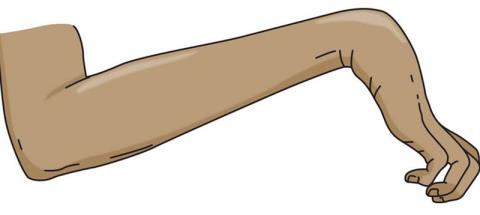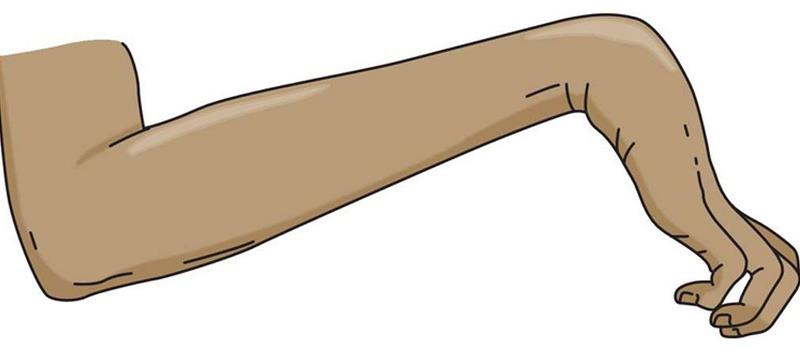Volkmann syndrome: Common symptoms, causes and treatments

Volkmann syndrome is also known as volkmann ischemia. Volkmann syndrome brings many complications in the extremities, especially the hands, making it difficult for patients to function. If detected and treated promptly when the disease is at a mild stage, the patient can completely recover normal motor functions.
This is a relatively dangerous syndrome as well as bringing certain effects to the patient's quality of life. That's why today SignsSymptomsList will learn with you about volkmann syndrome, its causes, typical symptoms as well as common treatments today!
General information about volkmann syndrome
volkmann syndrome definition
Volkmann's syndrome, also known as ischemic spasticity, is a condition in which the extremities especially in the hands (hands, fingers, wrists) occur after trauma to the hand such as : Fractures , burns, arterial injuries or crushing injuries.
These injuries to the hand cause blood flow between the arteries and veins to be reduced, leading to reduced blood flow and severe hypoxia. This causes certain damage to nerves, muscles and vascular endothelium. This is also the cause of muscle spasms in the forearm.
Volkmann syndrome is not an infectious disease with a relatively low incidence estimated at only 0.5%. Therefore, it can be considered that Volkmann syndrome is a rare disease that mainly affects children aged 5 to 8 years.
Subjects at risk for volkmann syndrome
According to the study, patients with diseases or injuries in the hands are a group of subjects at high risk of experiencing Volkmann syndrome. Specifically like:
- The most common limb fractures are the forearms and legs because these are the two most common sites for compartment syndrome.
- Software crash damage.
- The patient has a bleeding disorder.
- Have a vascular malformation (damaged or acquired).
- Severe burns.
- Excessive exercise.
- Complications in surgery.
- Improper infusion.
 People with hand injuries are at high risk for volkmann syndrome
People with hand injuries are at high risk for volkmann syndrome
Common symptoms of volkmann's syndrome
Volkmann syndrome causes deformities in the extremities, especially in the upper extremities in places such as: rotator cuff muscles, elbow flexors... Some common symptoms in the hand are wrist flexion, flexion and thumb flexion, knuckle extensor, knuckle flexion…
 Deformed hand in volkmann's syndrome
Deformed hand in volkmann's syndrome
Symptoms of volkmann syndrome are divided into three degrees based on clinical presentation:
- Mild degree: Only about 2-3 fingers have mild deformity, almost no sensory symptoms.
- Moderate: All fingers are contracted, especially the deformed thumb facing the palm. Most patients lose sensation.
- Severity: This is the most obvious complication. Not only the fingers but also the extensor muscles of the arm are affected.
In addition, some studies have shown that symptoms of volkmann syndrome are often accompanied by manifestations of compartment syndrome. So you should also pay attention to some symptoms of compartment syndrome such as:
- Pain in many levels, pain sensation increases when there is an external force.
- Skin is pale, pale.
- On clinical examination, pulse is difficult to detect.
- Patients appear strange sensations (feeling crawling, numb, etc.) even completely losing sensation.
- Reduce heavy exercise.
In most cases, pain is the earliest and most reliable symptom. In case you notice other abnormal signs of the body, you can go directly to the examination facility for direct consultation about the disease condition.
Causes of volkmann syndrome
As is known, the main cause of volkmann syndrome is ischemia in the extremities, specifically in the deep bony cavities of the extremities. This is a fairly closed cavity, the ability to expand is relatively poor. Therefore, any injury that causes increased pressure in the cavity can become the cause of acute compartment compression.
In addition, bleeding due to trauma or vascular malformations can also cause an increase in the volume of structures in the cavity. However, due to the poor expansion capacity of the bone cavity, increasing the volume of structures in the cavity will lead to the patient's compression of the cavity and lack of blood supply to the extremities.
Some other causes of volkmann syndrome can be mentioned with a similar mechanism as above: muscle hypertrophy, venous thrombosis, tumor proliferation, low blood albumin, epilepsy, burns and complications of volkmann syndrome . surgery.
In addition, a number of factors can increase the risk of volkmann such as animal bites, excessive exercise or too tight casts in cases of fractures.
 The cast is too tight causing ischemia of the extremities in volkmann syndrome
The cast is too tight causing ischemia of the extremities in volkmann syndrome
Current treatments for volkmann syndrome
Depending on each different location and the extent of the disease, doctors will have different treatment orientations. Basically can be divided into three directions of treatment:
- Treatment of the early stage: At this stage, the treatment of volkmann syndrome is relatively simple, just removing the bandages or splints to reduce pressure on the cavity. For chronic patients, doctors may also consider prescribing medications to ease symptoms.
- Urgent treatment: Skin incisions and emergency scales are emergency methods of preventing spasticity in volkmann syndrome. At present, there is still a lot of controversy surrounding the value of the IPC index to perform urgent skin incision and weighing. In general practice, when the cavity pressure is more than 30 mmHg, this emergency procedure should be performed.
- Surgical decompression: This method has been tested and proven effective in reducing compression and preventing permanent injury. However, many people, especially women, are still afraid of this procedure because it does not guarantee aesthetics. This procedure will be performed in a relatively conspicuous position on the arm and is at least 15cm long. In addition, after decompression, it is necessary to wait for the incision to reduce swelling before proceeding to suture, which easily leads to difficulty in movement due to skin tightening.
 The decompression surgery may not be aesthetic
The decompression surgery may not be aesthetic
In addition, physical and occupational therapy methods are also important in restoring motor function to patients with spasticity in volkmann syndrome.
Above SignsSymptomsList has learned with you briefly the definition of volkmann syndrome as well as its symptoms, causes and treatments. Hopefully, with the knowledge that has been provided, readers will partly understand the level of danger and how to avoid the risk factors of the disease. Wishing readers good health and do not forget to accompany SignsSymptomsList in the near future.